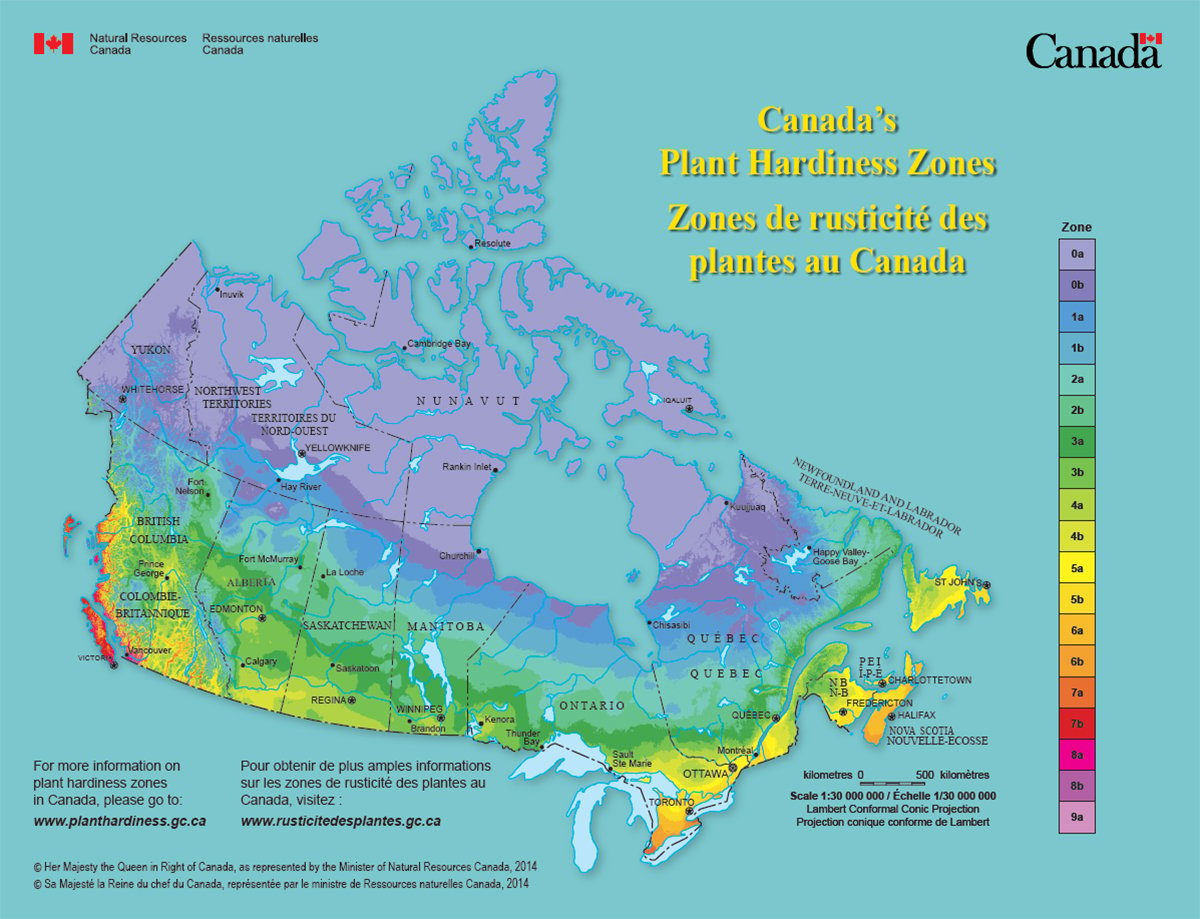Fusarium head blight will not cause as much damage to Western Canada’s wheat and durum crops as it did last year, say plant disease experts.
Pam deRocquigny, cereal crops specialist with Manitoba Agriculture, said the province has been conducting surveys in recent weeks to assess the incidence and severity of infection in standing wheat crops.
“From the preliminary results that I’ve seen so far, it looks like levels are definitely lower than last year in winter wheat,” she said.
Fusarium was a major problem in Manitoba last year where the disease was found in 100 percent of the winter wheat fields surveyed with an average severity level of 11.6 percent.
Read Also

Canada’s plant hardiness zones receive update
The latest update to Canada’s plant hardiness zones and plant hardiness maps was released this summer.
That severity was more than three times the 10-year average.
It wasn’t as bad in spring wheat, where the disease was found in 75 percent of fields surveyed but at much lower infection rates of one percent. That was below the 10-year average of 2.9 percent.
DeRocquigny said early harvest samples from the 2015 winter wheat crop confirm the survey results.
“From what we’ve heard so far in terms of the winter wheat that has come off, they’re reporting low levels of fusarium damaged kernels at this point as well,” she said.
“So that’s good news.”
Faye Dokken-Bouchard, provincial plant disease specialist with Saskatchewan Agriculture, said it is also shaping up to be a better year in that province.
“I’m not expecting a lot this year just with the drier weather that we had earlier in the season,” she said.
Fusarium occurred in 54 percent of the sampled wheat crops and 77 percent of the durum crops in 2014. The level of severity was 0.5 percent for wheat, which is about average, but 1.8 percent for durum, which is much higher than normal.
Neil Whatley, crop specialist with Alberta Agriculture, said damage from all fungus-related crop diseases is low this year.
“The 2015 growing season hasn’t been a major threat due to less precipitation,” he said.
Alberta is the only western province that has taken a stab at assessing the economic impact of fusarium.
It issued a report on July 30 showing that the disease has already caused millions of dollars in damage in the province since it first appeared in the 1990s.
“The losses were primarily due to grade losses and not yield losses,” said Ted Nibourg, farm business management specialist with the province.
Three degrees of severity were used to calculate the economic cost of fusarium. A low incidence was considered to be 0.4 percent affected wheat kernels, a medium incidence was one percent and a high outbreak two percent.
A low outbreak would reduce a No. 1 hard red wheat to a No. 2, a medium would drop it to a No. 3 and a high would reduce the crop to feed.
Based on average prices over a six-year period and assuming a 50 bushel per acre average yield, a low outbreak would cost a farmer $48 per acre, a medium $65 per acre and a high outbreak $87 per acre.
“Those costs can almost eliminate the contribution margin for hard red wheat in the brown and dark brown soil zones,” said Nibourg.
The report used data from the Canadian Grain Commission’s harvest sample program to calculate the cost of fusarium on a province-wide basis for the years 2003-12.
There were no significant losses in Alberta until 2009 when 150,000 tonnes of wheat were downgraded at a cost of about $3.6 million.
The following year 230,000 tonnes were downgraded, resulting in losses of $8.7 million due to higher wheat prices.
In 2012, more than 400,000 tonnes were downgraded but the severity levels were lower, so losses were estimated at $2.9 million.
“What we’re trying to get across to people is that it can be quite costly,” said Nibourg.
Dokken-Bouchard said Sask-atchewan hasn’t calculated the economic impact of fusarium in that province but she has seen an estimate from a wheat breeder that the disease cost the Canadian wheat industry more than $1 billion between 1980 and 2009.
“I would say it’s definitely in the top diseases for wheat because of the damage it can cause, not only in yield but also in quality,” she said.















